The Xiaomi Mi Note Pro and Mi Note Review
by Joshua Ho on September 11, 2015 9:00 AM ESTSystem Performance Cont'd
Now that we've gone over some of the more CPU-bound benchmarks for overall performance, we can look at some of the more GPU-bound benchmarks such as 3DMark, Basemark X, and GFXBench 3. Of course, it's important to note that we're actively in the process of migrating to newer GPU benchmarks so for now these benchmarks are really mostly representative of OpenGL ES 3 performance rather than 3.1.
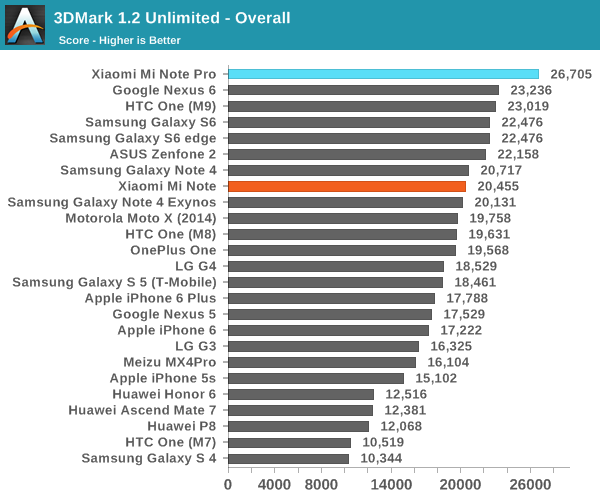
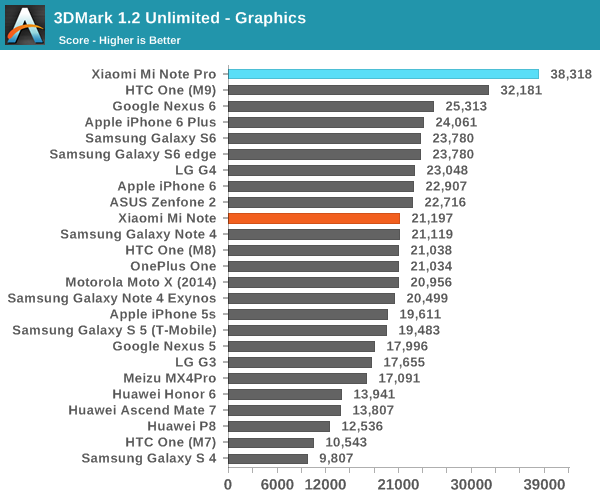
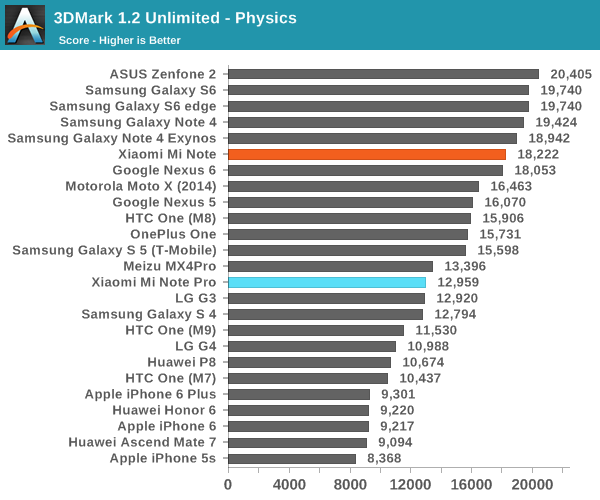

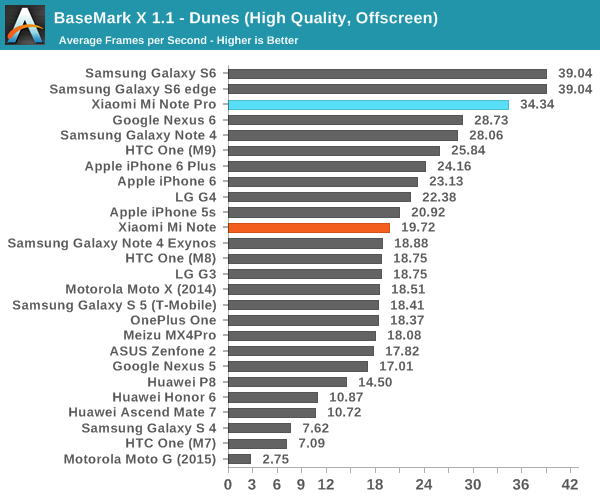

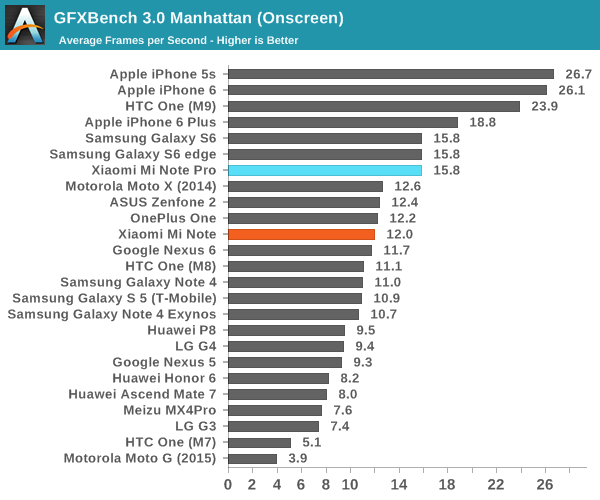
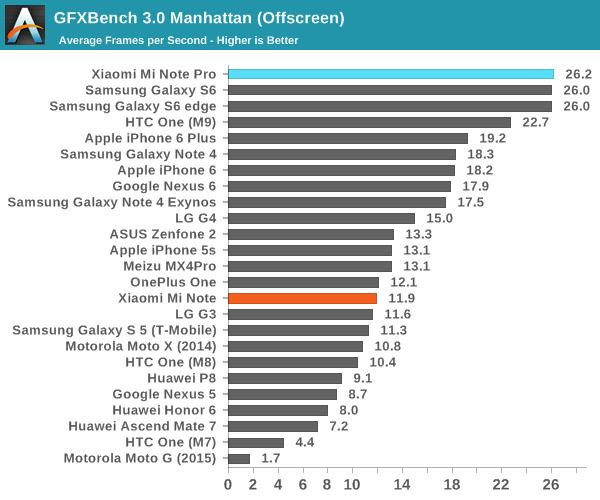
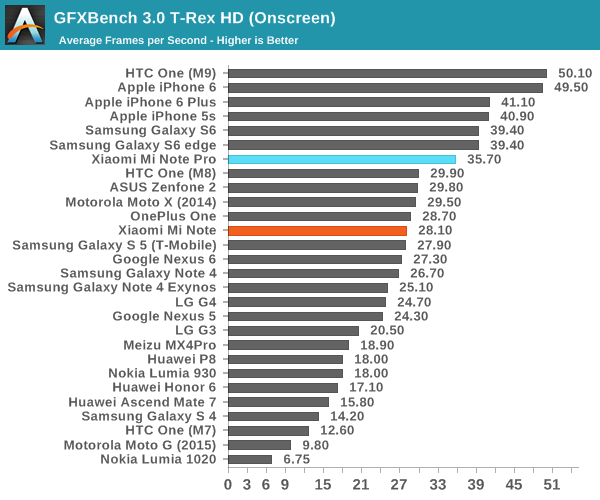
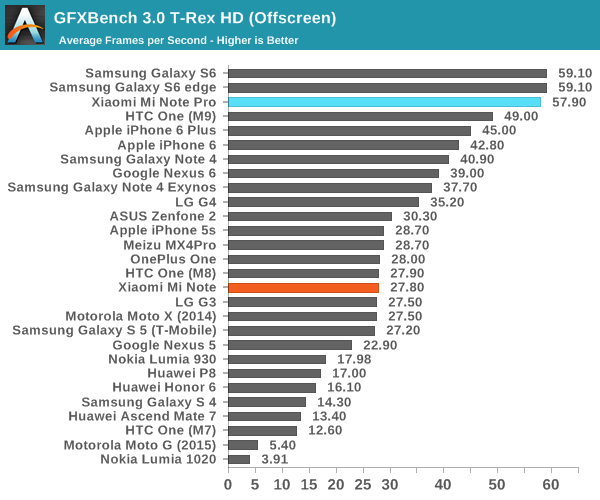
Interestingly, the GPU benchmark results show a pretty noticeable change relative to what we saw out of the One M9 at the launch of the first Snapdragon 810 phones. It's clear that some sort of driver optimization has been implemented as in every benchmark we see performance improvements well north of 5% that would be seen from purely clock speed gains. This highlights just how volatile GPU performance can be as Adreno 430 is now roughly equivalent to the T760MP8 in GFXBench and 3DMark. However, we still see the Adreno 430 lagging behind in Basemark X, which suggests the architecture of the Adreno 430 is a limiting factor in some workloads.
NAND Performance
While it’s often easy to forget about internal storage outside of capacity, it turns out that good storage performance is critical for a number of general purpose computing tasks. Mobile OSes aren’t necessarily as affected by storage performance as a desktop or laptop that is caching parts of RAM on internal storage, but even so it’s definitely possible to see the problems that result from cutting too deep here. Probably the most well-known example of this sort of cutting was the original Nexus 7 in 2012, which suffered from severe issues due to a lack of TRIM and general poor performance. In order to test mobile devices for this sort of problem, we use our standard benchmarks for testing basic read and write performance of the internal storage solution. In the case of the Xiaomi Mi Note Pro, we see a Samsung CGND3R eMMC package, while the Xiaomi Mi Note uses Toshiba’s 016GE2 eMMC solution.
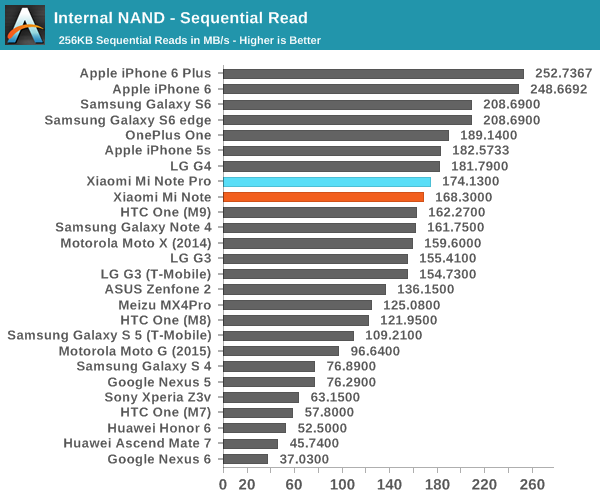
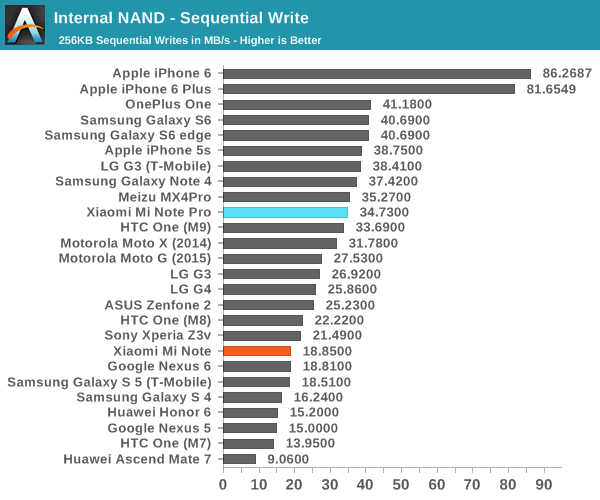
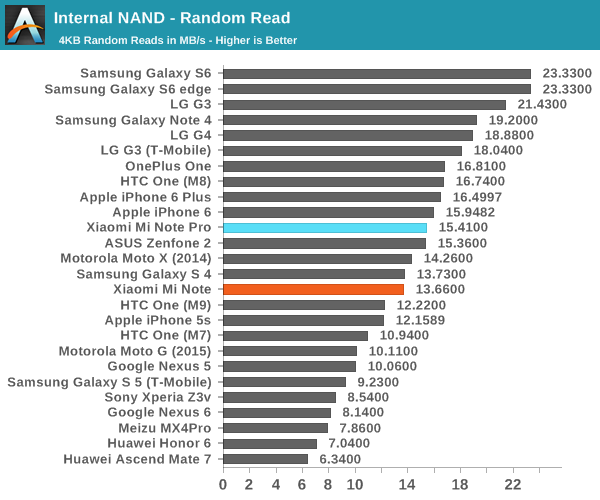
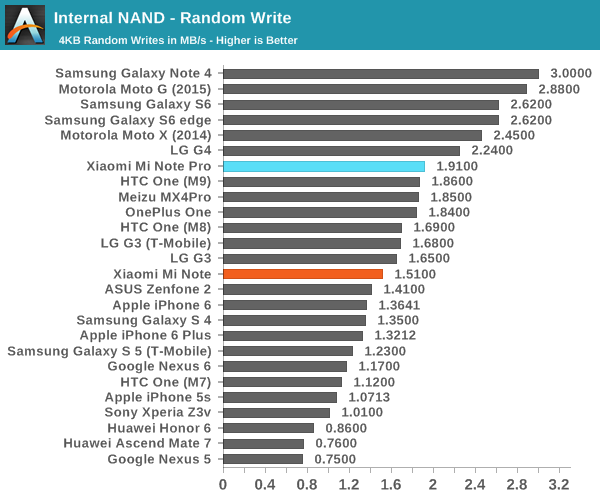
In practice, neither has incredible performance, but performance is far from poor here. For the most part, the user experience effects on storage performance will be somewhat hard to notice as sufficient storage performance means that the bottleneck for any kind of lag or stutter would be elsewhere in most applications.










94 Comments
View All Comments
CrazyBernie - Wednesday, September 16, 2015 - link
Sorry about the late arrival... but perhaps someone could create a region primer article/chart that could then be linked in each phone review? Doesn't really matter to me, since anything international means "Not on Verizon." I do still like reading about new phones though... I've been thinking about branching out from Verizon for a secondary, work related phone.leexgx - Friday, September 25, 2015 - link
i happy that your looking at giving more detailkey parts are is it USA (maybe even Verizon's CDMA network phones are rarer outside the USA), EU or HK/China/Asia phones
as most HK/China/Asia phones Lack band 20 on 4G and lack 3g900 so are useless on vodafone and O2 in the UK and for 4G most parts of the EU and the USA , where as USA phones norm lack 4G compatibility at all in the EU due to odd bands used (i assume by mobile operators to make sure you can only buy a USA phone)
please also list supported 3g/4G bands and their frequencies, in the EU its needs to support Band 20 (800), 3 (1800), band 7 (2600)
in the USA unknown to me (uk me) as seems to be a miss match of bands that are used and thats just for AT&T and T-mobile (for CDMA phone i probably would only buy a subsidized phone if i was on Verizon)
but 4G is a mess (something like 20-30+ 4g bands) compared to 3G and 4G as most EU phones support most networks in the world (quadband phones) even AT&T or t-mobile real 3G network (not fake 4g dc-hspa+ which is 3G)
Archipelago - Saturday, September 12, 2015 - link
You think the only people who read Anandtech are in the U.S.?user_5447 - Friday, September 11, 2015 - link
Wow, OnePlus Two display results look really bad. Plus battery life regressions (S810?).Full review coming soon?
Ian Cutress - Friday, September 11, 2015 - link
Ah, my bad. I was supposed to those data points out and leave them for the its own review. We're doing some analysis on the OPT results and will update in time.darkchazz - Friday, September 11, 2015 - link
They might as well redo the OnePlus One display measurements, because cyanogen has removed François Simond's excellent calibration with an update long ago.It has a very bluish white point now.
smartthanyou - Friday, September 11, 2015 - link
Android 4.4 and 5.0? I think that says all that needs to be said about updates and support.anonymousmonkey54 - Saturday, November 14, 2015 - link
Actually, XiaoMi has been VERY good with updates. They update biweekly IIRC. Since MIUI is a complete overhaul of Android (even more than TouchWiz), they can't jump to the latest version of Android as quickly. They also support MIUI on a variety of phones other than their own, and that takes some of their efforts.i4mt3hwin - Friday, September 11, 2015 - link
Hmm, one plus two on all the chartsBMNify - Friday, September 11, 2015 - link
Thanks for the review Josh, will like to see you review other Xiaomi phones which are incredible value for money like Redmi 2 ($90) and Mi 4 ( $220). These phones are available officially at almost similar pricing in the largest smartphones markets that is China, India, Brazil, Taiwan, Singapore, Malaysia and Philippines.